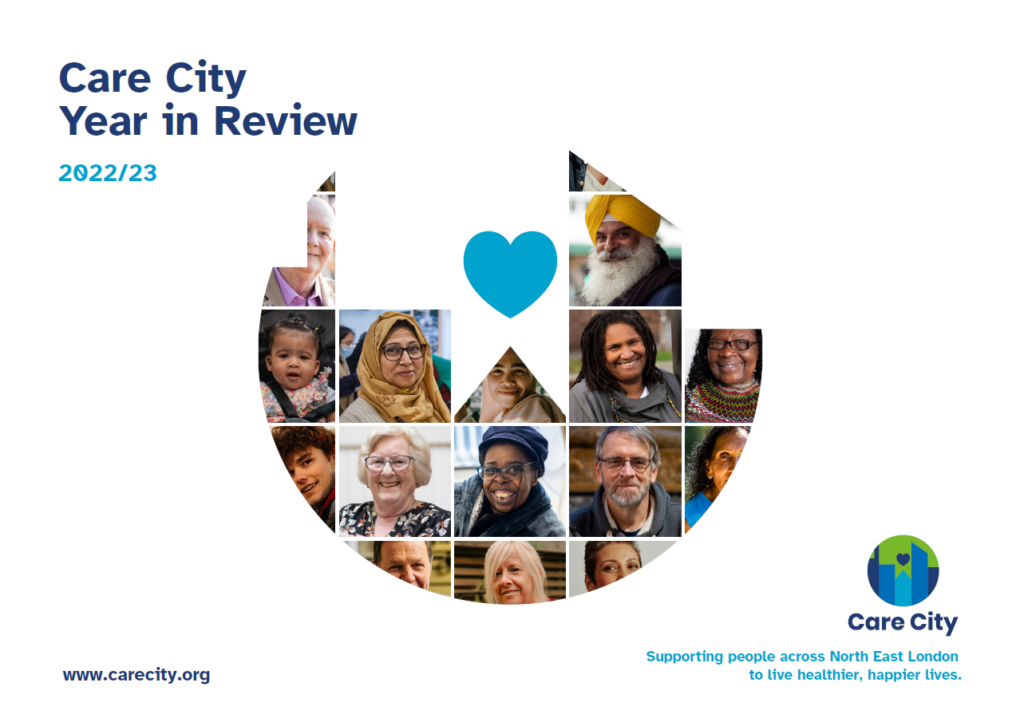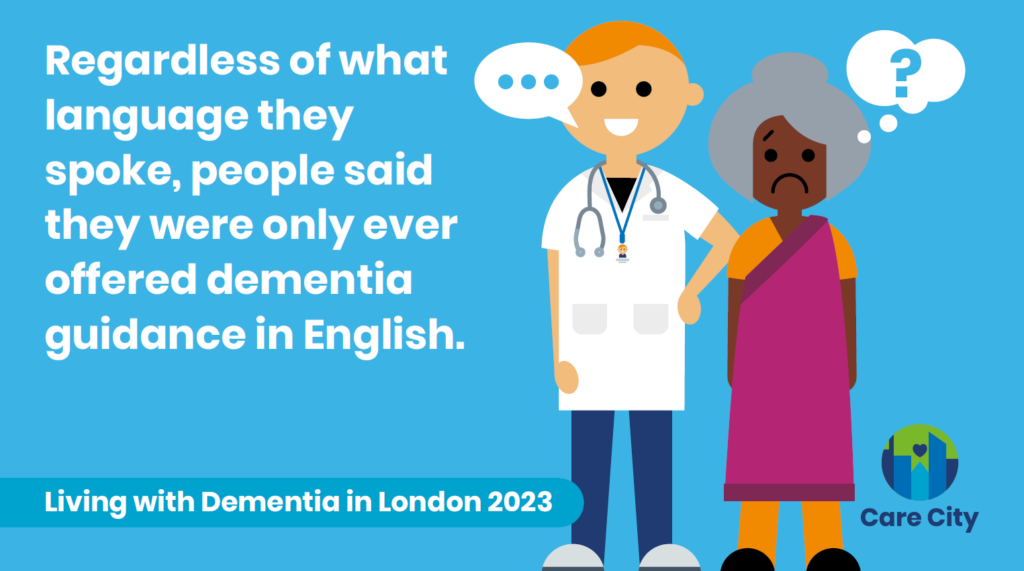Healthy Living – Four Stories From the Future of Care

Recipients of publicly funded care are sicker and more complex than ever, but care hasn’t changed. There is a growing gap between the job care staff are asked to do and the one they really do.
A Healthy Living – Four Stories from the Future of Care recognises that we ask ever more of health and too little of care. It explores what we should do to support care staff to develop clinical skills and work as partners with health colleagues, and how we can open up new career routes into nursing and AHP roles.
Our work introduces us to many of those working in the care sector, both paid and unpaid. The feedback is the same – it’s tough! Inside the pages of A Healthy Living, we meet Violet who cares for her husband with dementia. Violet first spotted the symptoms of George’s dementia. She arranges the medical appointments, manages his medication and continues to push for more health and care support. When Violet talks about her life as a carer, she is telling a love story. But it’s incredibly hard work.
We also meet Tracy, a senior care worker. After 25 years working in care, Tracy has done a lot of training, but not taken any care qualifications. However after 90 minutes training with a portable piece of tech that monitors vital signs, she’s now confident having discussions with her District Nurse colleagues and vitally spotted a patient becoming seriously unwell and was able to alert their GP. She is a life saver, an Expert Carer.
Skills for Care‘s Employer’s guide to the deployment of qualified registered nursing associates in social care settings, offers guidance that amongst other things encourages local dialogue regarding commissioning of nursing services and workforce redesign. This is what Care City attempts to do.
Another story featured in Health Living, introduces Ajeesh, an Apprentice Nursing Associate (ANA), unique in that he works for a Care Home that does not employ a Registered Nurse. Whilst regulation stipulates that Nursing Associates receive supervision from a Nurse, the Care City ANA Programme, supported by Skills for Care, the local CEPN, UEL, NELFT and NEL HCP, has enabled his access to the apprenticeship through ‘arms length’ supervision from a Nurse at NELFT with the intention that over time they will build collaborative networks of supervision, learning from the GPs, District Nurses and other clinicians who support their service users. The long-term aim is to remodel the Residential Home and Domiciliary Care Agency workforce to include the qualified Nursing Associate role, continuing to utilise this ‘arms length’ supervision model, and in accordance with the latest guidance from Skills for Care.
Whatever happens to the funding of care, care itself – the service, the workforce,
the infrastructure – needs radical attention. Rather than hoping politicians fix care, local leaders can forge their own paths to change care for the better.
Violet, Tracy and Ajeesh show us what is possible for care, what can be done with the right training and support, commitment and dedication, and that investing in care staff and their neighbourhoods, we can create a platform for preventative care and help to sustain our health system.
I want this document to be an argument for care. Care that really helps people, care that is highly skilled, care that is a career not just a calling and care that is connected to healthcare. Whatever happens to the funding of care, care itself – the service, the workforce, the infrastructure – needs radical attention. Rather than hoping politicians fix care, local leaders can forge their own paths to change care for the better. Care City wants to keep helping to drive this change – building prototypes of the future, training staff and helping systems to change.
John Craig, Author, Healthy Living – Four Stories from the Future of Care


